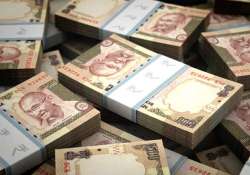Budget 2015: Where does the government get its money from?
New Delhi: Finance Minister Arun Jaitley is all set to present his first full-year Budget tomorrow in the Parliament. He will present a roadmap on how the government plans to spend the money. But you

New Delhi: Finance Minister Arun Jaitley is all set to present his first full-year Budget tomorrow in the Parliament. He will present a roadmap on how the government plans to spend the money. But you may wonder from where the government gets the money for budget and how is it spent?
There are two aspects of the Budget – receipt and expenditure. Receipt is the income of the government that it receives from different sources and expenditure is how the government will spend its income.
The budget shows the expected revenue of the year and how the money will be distributed to different departments of the government. The government has two sources of income, revenue receipt and capital receipt.
Revenue receipt: The income of the government that does not entail sale of assets is included in revenue receipt. Taxes contribute most in the revenue receipt. The other sources of revenue receipt are profits and interests from the investments made by the government.
Capital receipt: All receipts that liquidate an asset would in general be under capital account. The capital received by the government after disinvestments comes under this category. Other sources of capital income are market loans, foreign aides and public provident funds.
On the expenditure side of the Budget, there are two sets of classifications- Capital vs Revenue and Plan vs Non-plan expenditure:
Capital Expenditure: Expenditure used to create assets or to reduce liabilities e.g. building a road, investments in Public Sector Undertakings. Capital expenditure yield revenue in future in form of profits and taxes.
Revenue Expenditure: Expenditure that is not used to create assets e.g. expenses on salaries or other administrative costs. Revenue expenditure is pure expense of the government that will not generate any revenue directly but is needed to generate revenue and run the government.
Planned expenditure: Expenditure government schemes and projects fall under this category. In earlier budgets, the expenditure covered by five-year Plans (drafted by Planning Commission) was included in planned expenditure. Planned expenditure specifies programmes that different ministries will fund and develop in the coming year (such as the Mid-day Meal scheme and the Sarva Shiksha Abhiyan).
Planned expenditure can have both revenue and capital components. For instance, under the Pradhan Mantri Gram Sadak Yojana, administrative costs could be classified as revenue expenditure, while expenditure on the actual infrastructure might be classified as capital expenditure.
Non-plan expenditure: Ongoing expenditure by the government not covered by the Plans. These include interest payments on government debt, expenditure on organs of the state such as the judiciary and the police and even expenditure on the maintenance of existing government establishments such as schools and hospitals. Non-plan expenditure too, has revenue and capital components.